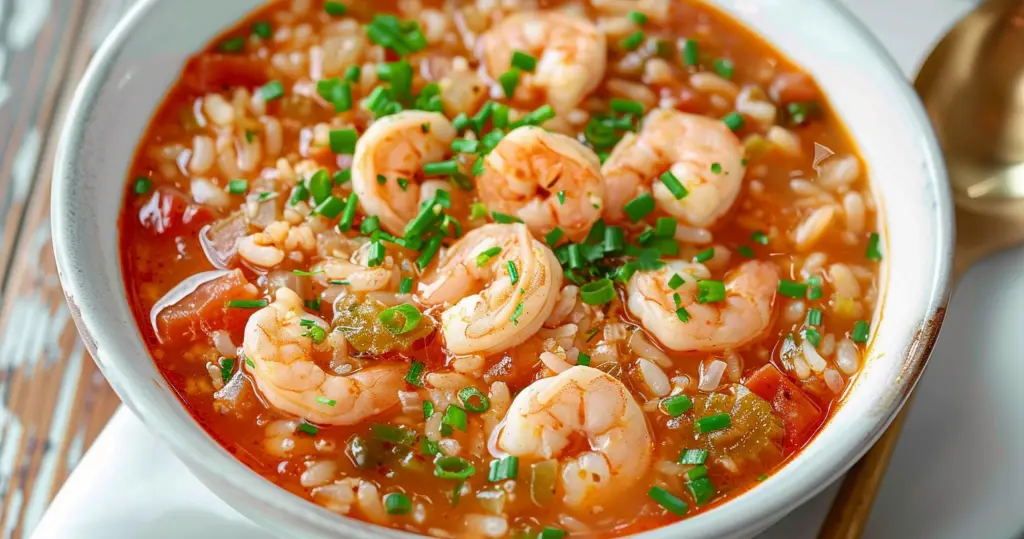Jambalaya soup is a delightful variation of the classic jambalaya dish, combining the rich, hearty flavors of traditional jambalaya with the comforting quality of a soup. This dish is perfect for anyone who loves the robust taste of Cajun and Creole cuisine but prefers a brothier consistency. In this comprehensive guide, we will explore everything you need to know about making the perfect jambalaya soup, including its history, cultural significance, and the reasons behind its widespread appeal.

Overview of Jambalaya Soup
Jambalaya soup takes the beloved components of traditional jambalaya—such as andouille sausage, chicken, shrimp, and a variety of vegetables—and transforms them into a flavorful, soupy delight. The result is a dish that is both comforting and full of vibrant, spicy flavors. Whether you are preparing it for a family dinner, a special occasion, or simply craving a taste of Louisiana, jambalaya soup is an excellent choice.
Brief History and Cultural Significance
Jambalaya has deep roots in Louisiana’s culinary traditions, reflecting the state’s rich cultural history. The dish itself is a melting pot of influences from Spanish, French, African, and Native American cuisines. Traditional jambalaya is not typically soupy; it’s a moist but not liquid rice dish. However, jambalaya soup is a variation that embraces a brothier consistency, combining the rich flavors of jambalaya with the comforting quality of a soup. This variation is perfect for those who enjoy the flavors of jambalaya but prefer a dish that’s more akin to a stew.
In Louisiana, food is more than just sustenance; it’s a celebration of community and history. Jambalaya soup is no different. It brings people together and tells a story of cultural fusion with every spoonful. For more on the cultural significance of jambalaya, visit the Jambalaya Wikipedia page.
Importance of Quality Ingredients
Using high-quality ingredients is crucial for making the best jambalaya soup. Fresh vegetables, proteins, and seasonings significantly enhance the flavor and texture of the dish. Selecting the right type of sausage, such as andouille, and using fresh seafood like shrimp can make a big difference.
Freshness of Vegetables and Proteins
When making jambalaya soup, the freshness of your ingredients matters. Fresh bell peppers, celery, onions, and garlic create a flavorful base. High-quality andouille sausage and fresh chicken and shrimp provide the protein that makes this soup hearty and satisfying.
Choosing the Right Type of Sausage and Seafood
Andouille sausage is a staple in traditional jambalaya recipes. Its smoky, spicy flavor is essential for an authentic taste. Similarly, using fresh shrimp adds a sweet, delicate flavor that complements the robust spices in the soup. For more on andouille sausage, check the Andouille Sausage Wikipedia page.
Why Jambalaya Soup Is So Popular
Jambalaya soup’s popularity is due to its versatility, robust flavor, and ease of preparation. It can be customized to suit various tastes and dietary preferences, making it a favorite among home cooks and chefs alike.
Versatility in Serving
One of the great advantages of jambalaya soup is its versatility. It can be served as a main course or as a starter. The dish can also be adjusted to suit different heat levels and ingredient preferences. This flexibility allows it to fit seamlessly into any meal plan.
Health Benefits
Jambalaya soup is not only delicious but also nutritious. It is packed with protein from the chicken and shrimp and provides essential vitamins and minerals from the vegetables. The use of spices such as cayenne pepper and garlic also adds health benefits, including anti-inflammatory properties and improved digestion.
For more on the nutritional benefits of the ingredients used in jambalaya soup, visit the Nutritional Benefits of Avocado and Healthy Cooking Tips on EatingWell.
In this introduction, we’ve explored the basics of what makes jambalaya soup a beloved dish. From its historical roots to the importance of quality ingredients, understanding these fundamentals sets the stage for mastering this classic recipe. Stay tuned for the next sections, where we’ll delve deeper into the preparation phase, essential tools, and detailed instructions to ensure your jambalaya soup turns out perfectly every time.
For additional resources and tips, continue reading the subsequent sections of this guide.


Leave a Comment